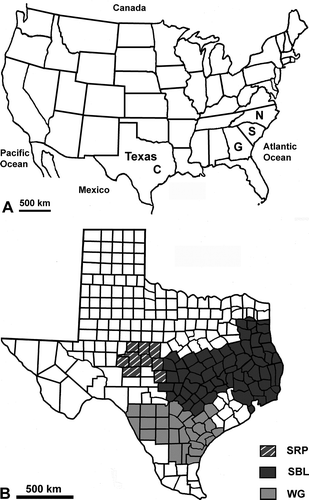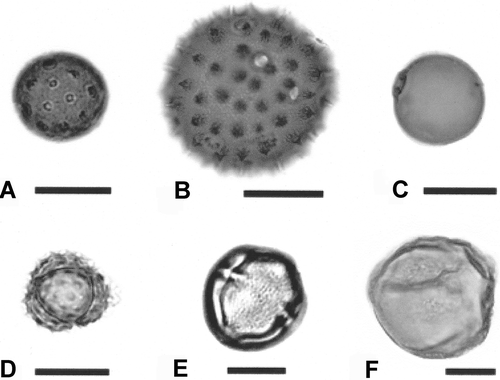Figures & data
Figure 1. Maps of the United States of America and Texas. A. The United States of America showing College Station, Texas (C), North (N) and South (S) Carolina and Georgia (G). B. A map of Texas showing three boll weevil eradication zones: Southern Rolling Plains (SRP) zone, Southern Blacklands (SBL) zone, where Cameron is located, and Southern Texas/Winter Garden (WG) zone, where Uvalde is located.

Table I. General pollen data found in the boll weevils from the three eradication zones
Table II. Each taxon's percentage of the total number of pollen grains per location
Figure 2. Pollen found in boll weevils collected in the Southern Rolling Plains, Southern Blacklands (Cameron) and Winter Garden (Uvalde) eradication zones. A. Cheno-Am, Amaranthus palmerii. B. Malvaceae, cotton, Gossypium hirsutum. C. Poaceae, grass. D. Asteraceae ‘low spine’ #13. E. Anacardiaceae, poison ivy, Toxicodendron radicans. F. Portulacaceae, flameflower, Phermeranthus sp. Scale bars – 50 μm (B), 20 μm (A, C–F).
